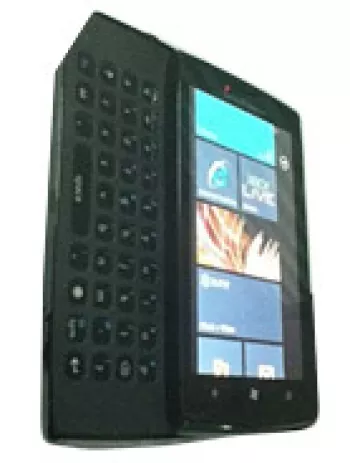Unveiling the Sony Ericsson W660 Specs Pricing Pros & Cons

Network
The Sony Ericsson W660 is a feature phone that supports GSM and UMTS technology, making it a versatile choice for users who were transitioning to more advanced connectivity during its release. It operates on 2G bands GSM 900, 1800, and 1900, as well as 3G UMTS 2100, allowing for a decent speed of 384 kbps, which was quite satisfactory for mobile internet usage at the time of its launch.
Launch
First announced in March 2007, the Sony Ericsson W660 was eventually discontinued as newer technology came into play. However, during its time, it gained popularity for its balanced features and stylish design, appealing to a broad audience who was looking for a reliable, music-focused phone.
Body
The phone has dimensions of 102 x 46 x 14.5 mm and weighs only 93 grams, offering a compact and lightweight design that fit comfortably in the user's hand. It operated using a Mini-SIM, which was standard for phones at that period. The ergonomics of the device ensured ease of use, with buttons and controls that were intuitively placed for access.
Display
Sony Ericsson W660 features a 2.0-inch TFT display capable of showing 256K colors, with a resolution of 176 x 220 pixels, translating to a pixel density of roughly 141 ppi. The screen size, although small by today’s standards, was adequate for browsing through photos, messages, and basic applications that the phone supported.
Memory
Internally, the W660 comes with 16MB of storage, but it also has a Memory Stick Micro (M2) card slot, which supports up to 4GB of additional storage. This feature was particularly useful for users who wanted to store music files, as the phone was part of the Walkman series. The phonebook could store 1000 contacts, each with up to 20 fields, and it also supported photo calls.
Main Camera
The main camera is a 2 MP shooter capable of capturing images and videos. For a device launched in 2007, a 2 MP camera was a reasonable inclusion, allowing users to capture memorable moments on the go, although photography wasn't the primary focus for this model.
Selfie Camera
While there isn't a dedicated selfie camera in the modern sense, the W660 included a videocall camera, making it possible to engage in video calls, a feature that was emerging at the time for more engaged communication.
Sound
The device includes a loudspeaker and supports vibration alert types, alongside downloadable polyphonic, MP3, and AAC ringtones. However, it lacks a 3.5mm headphone jack, which required users to use proprietary connectors, a common characteristic of early mobile devices.
Comms
In terms of communication, the phone does not support WLAN, but it does offer Bluetooth 2.0 with A2DP for wireless audio streaming. It also includes a stereo FM radio with RDS for listening to music and news. For data exchange and charging, a USB 2.0 port is provided.
Features
The Sony Ericsson W660 came equipped with several key features such as messaging support for SMS, MMS, Email, and Instant Messaging. Its browser could handle WAP 2.0 and HTML, along with an RSS reader. It was Java-enabled, supporting downloadable games and applications to enhance user interaction and utilization.
Battery
The phone is powered by a removable Li-Ion battery with a standby time of up to 360 hours on both 2G and 3G networks, and up to 6 hours of talk time. The removable battery allowed users to carry an extra battery, providing practical benefits during travel or intensive use.
Miscellaneous
Available in three colors: Record Black, Rose Red, and Silk White, the W660 also adheres to SAR EU regulations with a rating of 1.27 W/kg for the head. At launch, the price was about 110 EUR, placing it in an accessible range for many consumers interested in a stylish, music-centric phone.
Main Features of Sony Ericsson W660
- Compact and lightweight design: 102 x 46 x 14.5 mm, 93 g
- 3G connectivity: UMTS 2100 with 384 kbps speed
- 2.0-inch TFT display with 256K colors
- 2 MP main camera with video capabilities
- Memory Stick Micro (M2) support up to 4 GB with 512 MB included
- Bluetooth 2.0 with A2DP support
- Stereo FM radio with RDS
- Removable Li-Ion battery with up to 6 hours of talk time
- Available in multiple colors: Record Black, Rose Red, Silk White
Drawbacks of Sony Ericsson W660
- Lacks Wi-Fi connectivity for internet access
- No GPS for location services
- Limited internal memory of only 16MB
- Low screen resolution of 176 x 220 pixels
- No 3.5mm headphone jack for standard audio connectivity
- Relatively small display size of 2.0 inches
- Discontinued model, may lack support and updates
- Video call capability limited by low-resolution camera



View Also
More Phones
All Rights Reserved +13924 Phones © Mobilawy 2025

























